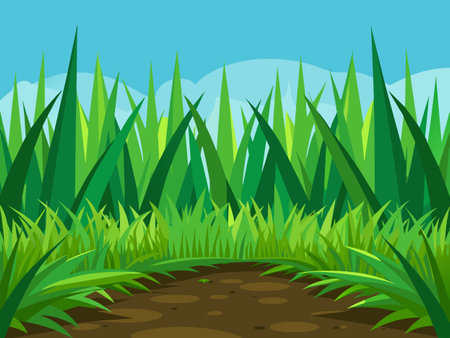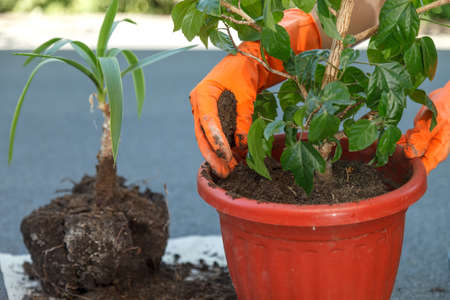Understanding Annuals and Their Role in Your Garden
When it comes to designing a colorful and dynamic garden, annual plants can be your best friends. But what exactly are annuals, and how do they differ from other types of plants like perennials? Let’s break it down in a simple way.
What Are Annuals?
Annuals are plants that complete their entire life cycle—from seed to flower to seed again—all within one growing season. Once the season ends (usually with the first frost), these plants die off. This means you’ll need to replant them each year, but it also gives you the freedom to change up your garden’s look annually.
How Are Annuals Different from Perennials?
To better understand how annuals fit into your garden design, here’s a quick comparison:
| Feature | Annuals | Perennials |
|---|---|---|
| Lifespan | One growing season | Multiple years |
| Bloom Time | All season long until frost | Usually a few weeks per year |
| Maintenance | Requires replanting yearly | Comes back every year with proper care |
| Design Flexibility | High—change colors and layout yearly | More permanent placement in garden |
| Cost Over Time | May cost more annually due to replanting | Saves money in the long run |
Why Choose Annuals for Your Garden?
#1: Vibrant Color All Season Long
If youre looking for nonstop color from spring through fall, annuals are unbeatable. Many varieties bloom continuously, keeping your garden looking fresh and lively.
#2: Easy Way to Experiment with Design
Since you replant them each year, annuals let you experiment with new color schemes, textures, or plant heights without committing long-term.
#3: Perfect for Filling Gaps
If your perennial beds have empty spots or areas that look bare after early bloomers fade, annuals can step in to add interest and fill those spaces beautifully.
#4: Great for Containers and Borders
Annuals thrive in containers, hanging baskets, window boxes, and border plantings. Their versatility makes them perfect for any garden style—whether youre going for cottage charm or a modern minimalist look.
Popular Types of Annuals in the U.S.
| Name | Main Colors Available | Typical Height Range |
|---|---|---|
| Petunias | Purple, pink, white, red, blue | 6″–12″ |
| Zinnias | Orange, yellow, red, pink, purple | 12″–36″ |
| Marigolds | Yellow, orange, gold, red tones | 6″–18″ |
| Begonias | Pink, white, red, orange hues | 8″–24″ |
| Coleus (foliage) | Burgundy, lime green, variegated tones | 12″–30″ |
| Lantana (good for pollinators) | Pinks, yellows, oranges mixed on same bloom cluster | 12″–24″ |
The Role of Annuals in Seasonal Design Planning
You can think of annuals as the seasonal accessories of your garden wardrobe. They let you play with trends—like planting patriotic red-white-and-blue combos for summer holidays or warm oranges and yellows for fall vibes. Since theyre temporary by nature, annuals encourage creativity each year without long-term commitment.
This flexibility makes them ideal for gardeners who enjoy refreshing their outdoor space often or want high-impact results fast—perfect for entertaining guests or boosting curb appeal during peak seasons.
In the next section, we’ll dive deeper into choosing annuals based on color theory and how to make combinations that really pop in your landscape design.
2. Choosing Color Combinations That Pop
Color is one of the most exciting parts of garden design, especially when working with annuals. These plants offer a wide range of vibrant hues that can completely transform your yard throughout the growing season. To make your garden stand out, it’s important to choose color combinations that not only pop but also complement your home and surrounding landscape.
Understanding the Color Wheel
The color wheel is a helpful tool for gardeners looking to create eye-catching combinations. Here are three basic strategies:
| Color Strategy | Description | Example |
|---|---|---|
| Complementary Colors | Colors opposite each other on the color wheel; high contrast and vibrant. | Purple petunias with yellow marigolds |
| Analogous Colors | Colors next to each other on the wheel; harmonious and soothing. | Red, orange, and yellow zinnias |
| Monochromatic Colors | Different shades of the same color; elegant and unified. | Various shades of blue lobelia |
Selecting Colors That Match Your Home and Landscape
When choosing colors for your annuals, consider your homes exterior. A warm-toned brick house might look stunning with oranges, reds, and yellows, while a cool gray or blue home pairs well with purples, blues, and pinks. Also think about nearby permanent landscaping—like trees, shrubs, or hardscape features—so your annuals blend naturally into the setting.
Tips for Matching Color with Your Home
- If your home is neutral (white, beige, gray), you have more flexibility—try bold combinations like red and purple or blue and yellow.
- If your home has strong color tones (like terracotta or navy), choose flowers that echo or complement those shades.
- Add white or silver foliage (like dusty miller) to soften bold combos or add brightness in shady spots.
Create Visual Impact Through Placement
Use bright colors at entryways or along pathways where they’ll be most noticed. Cooler hues like blues and purples tend to recede visually and are great for background planting. Hotter colors like red, orange, and yellow come forward and grab attention—perfect for focal points.
Quick Plant Pairing Ideas by Effect:
| Desired Effect | Suggested Annual Combos |
|---|---|
| Bold & Bright Entryway | Red geraniums + yellow calibrachoa + white alyssum |
| Soft & Serene Border | Lavender petunias + sky-blue lobelia + dusty miller |
| Tropical Vibes Patio Pot | Orange marigolds + purple salvia + lime-green coleus |
| Cottage Garden Feel | Pink cosmos + white snapdragons + soft blue ageratum |
By thoughtfully selecting color combinations that reflect both your personal style and the natural surroundings of your home, you can create a garden full of visual excitement that evolves beautifully through the seasons.

3. Using Plant Height to Create Visual Layers
When designing your garden with annuals, height plays a key role in creating structure and visual appeal. By arranging plants according to their mature height, you can build natural layers that add depth, guide the eye, and establish focal points throughout your landscape.
Why Height Matters in Garden Design
Using varying plant heights helps prevent a flat, one-dimensional look. Instead, you create a dynamic space where taller plants serve as backdrops or anchors, medium-height plants provide body and texture, and shorter varieties fill in gaps and soften edges. This layered approach is especially helpful in flower beds along fences, walls, or walkways.
Layering Basics: Tall, Medium, and Short Annuals
To make it easier to visualize how to layer annuals by height, here’s a simple guide:
| Height Category | Typical Height Range | Examples of Annuals | Placement Tips |
|---|---|---|---|
| Tall | 24″ and above | Sunflowers, Cleome, Cosmos | Place at the back of borders or center of island beds |
| Medium | 12″–24″ | Zinnias, Marigolds, Salvias | Use in the middle layer to bridge tall and short plants |
| Short | Under 12″ | Alyssum, Lobelia, Dwarf Petunias | Plant along edges or pathways for a finished look |
Creating Focal Points with Height Variation
Taller annuals can also serve as natural focal points. For example, a group of bold sunflowers at the corner of a bed can draw attention and add drama. In container gardens or raised beds, use vertical elements like trellises with climbing annuals (like morning glories) to add height without taking up ground space.
Pro Tip:
If your garden is visible from multiple angles—like a central island bed—arrange plants with the tallest ones in the middle and gradually step down in height toward the edges. This creates a balanced view from all sides.
Spacing for Light and Airflow
Avoid crowding taller plants too close together; this can block sunlight from reaching smaller neighbors and reduce air circulation. Proper spacing not only supports healthy growth but also makes each plants form stand out more clearly within the design.
4. Timing Your Plantings for Maximum Seasonal Interest
To keep your garden bursting with color from early spring through late fall, timing is everything. By staggering your plantings of annuals, you can create a dynamic landscape that evolves with the seasons. This approach not only maximizes bloom time but also keeps your garden looking fresh and exciting all year long.
Why Staggered Planting Works
Annuals have different bloom times—some thrive in cool spring weather, others love the heat of summer, and a few shine in the crisp days of fall. Understanding when each type of annual hits its peak allows you to layer your garden with waves of color that change with the season.
Plan by Bloom Season
Heres a simple guide to help you plan which annuals to plant and when:
| Season | Recommended Annuals | Planting Time | Bloom Duration |
|---|---|---|---|
| Spring | Pansies, Snapdragons, Calendula | Late winter to early spring (as soon as soil is workable) | Early spring to early summer |
| Summer | Zinnias, Marigolds, Petunias | After last frost date | Late spring through summer |
| Fall | Mums, Ornamental Kale, Asters | Late summer to early fall | Late summer through first frost |
Tips for Success
Know Your Frost Dates
The timing of your plantings will vary depending on your USDA hardiness zone. Always check your local frost dates before planting tender annuals outdoors.
Use Succession Planting
Sow seeds or transplant seedlings every few weeks during the growing season to replace fading blooms and maintain continuous color. For example, sow zinnias every 2–3 weeks from late spring through mid-summer for a steady show.
Mix Early and Late Bloomers Together
Create mixed containers or beds that include both early- and late-blooming varieties. This way, as one plant fades, another takes over seamlessly.
Example Combo:
- Pansies (Spring)
- Zinnias (Summer)
- Asters (Fall)
This layering method ensures theres always something blooming in the same space over several months.
Caring for Plants Through the Seasons
To keep your annuals thriving throughout their season:
- Deadhead regularly: Removing spent blooms encourages new flowers.
- Feed appropriately: Use a balanced fertilizer every few weeks during active growth.
- Irrigate consistently: Water deeply and adjust frequency based on weather conditions.
- Pest watch: Keep an eye out for aphids or mildew during warm, humid months.
The key to designing a stunning garden with annuals lies in thoughtful planning and timely execution. With staggered plantings and seasonal awareness, you can enjoy vibrant color from the first signs of spring until the last leaf falls in autumn.
5. Pairing Annuals with Other Garden Elements
Annual flowers can bring a burst of color and personality to your garden, but they truly shine when thoughtfully paired with other garden elements like shrubs, containers, and landscape features. By mixing these components, you can create a space that feels balanced, intentional, and beautiful throughout the growing season.
Blending Annuals with Shrubs
Shrubs provide structure and year-round presence in the garden. When combined with annuals, they act as a backdrop that makes colors pop and textures stand out. Use low-growing annuals at the base of taller shrubs to soften their edges or fill in bare spots.
| Shrub Type | Suggested Annual Pairings | Effect |
|---|---|---|
| Boxwood | Pansies, Marigolds | Add pops of color along neat evergreen lines |
| Hydrangea | Lobelia, Petunias | Create contrast with trailing or vibrant blooms |
| Spirea | Zinnias, Cosmos | Enhance airy texture and seasonal variety |
Using Containers for Versatility
If your garden has limited space or needs a splash of color in specific spots, containers filled with annuals are an easy solution. Place them on porches, patios, or even among flower beds to add height variation and seasonal interest. Choose containers that match your outdoor décor for a unified look.
Tips for Container Success:
- Select pots with good drainage to prevent root rot.
- Create visual balance using the “thriller, filler, spiller” method: one tall focal plant (thriller), medium-height plants (fillers), and trailing varieties (spillers).
- Rotate container annuals seasonally to keep displays fresh from spring through fall.
Tying in Garden Features
Your hardscape—paths, fountains, benches—can work harmoniously with annual plantings when you coordinate colors and plant shapes around them. For example, line a stone walkway with low-growing alyssum or lobelia for a soft edge that leads the eye naturally through your garden.
Cohesive Design Ideas:
- Around fountains: Use moisture-loving annuals like impatiens or coleus.
- Nearing seating areas: Plant fragrant varieties such as sweet alyssum or heliotrope to enhance the sensory experience.
- Near garden art: Choose complementary bloom colors that highlight statues or metalwork.
The key is to think of annuals not just as standalone bursts of color but as part of a larger design story. When integrated thoughtfully with permanent plants and garden features, they can elevate your outdoor space into something truly special.


